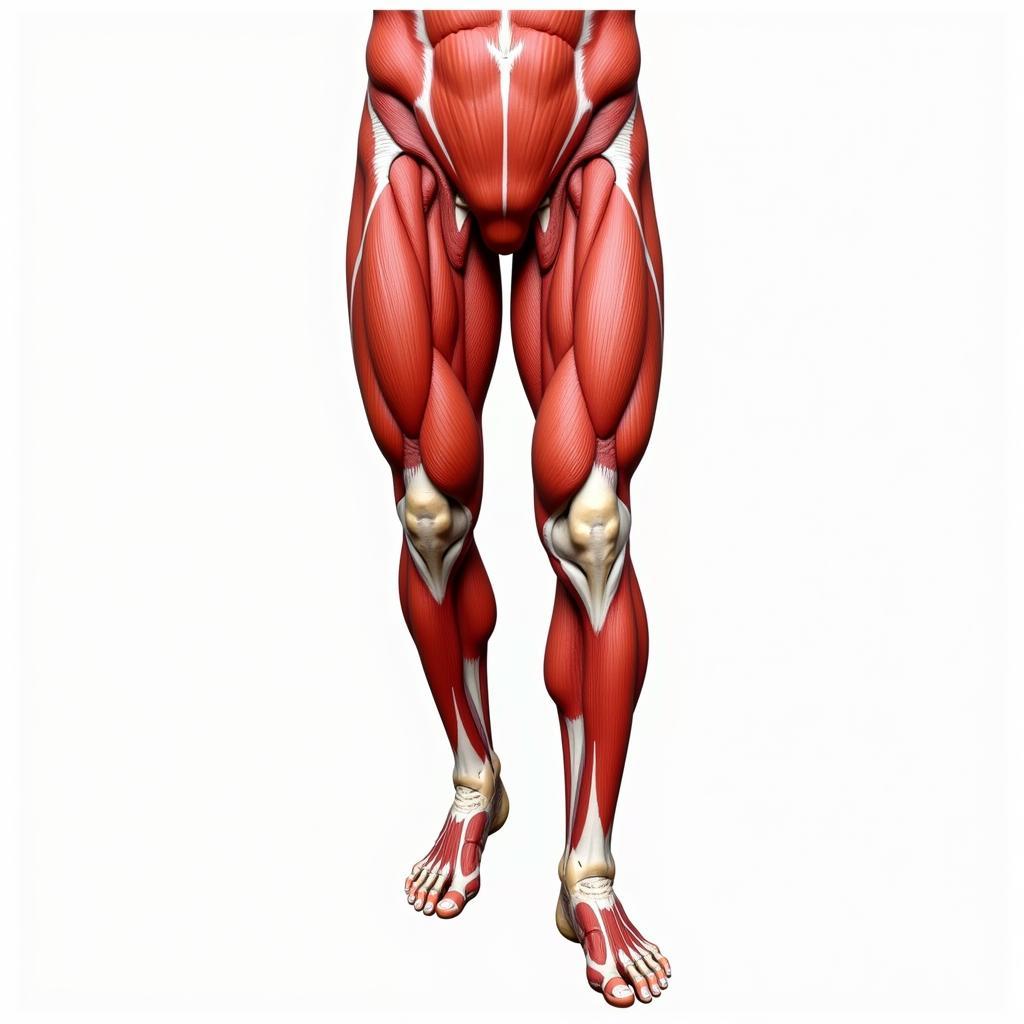Footballer Thighs: Power, Speed, and Stability
January 4, 2025Footballer thighs are often a topic of fascination and discussion, symbolizing power, speed, and stability on the pitch. These powerful muscles are essential for every aspect of the game, from explosive sprints and powerful shots to maintaining balance and enduring tackles. Let’s delve into the science and training behind developing footballer thighs like mine.
The Anatomy of a Footballer’s Thigh
A footballer’s thigh isn’t just about size; it’s about the perfect balance of strength, power, and flexibility. The quadriceps, hamstrings, and adductors are the key muscle groups that contribute to this. The quadriceps, located at the front of the thigh, are responsible for extending the knee, crucial for powerful kicks. Hamstrings, at the back of the thigh, are vital for flexing the knee and hip extension, powering sprints and jumps. The adductors, on the inner thigh, provide stability and control during lateral movements.
Why are Strong Thighs so Important in Football?
Strong thighs are the engine of a footballer. They generate the power needed for explosive accelerations, allowing players to quickly change direction and outpace opponents. Furthermore, strong thigh muscles are crucial for jumping, heading, and maintaining balance during tackles, contributing significantly to overall athletic performance. Having robust thighs also plays a defensive role, providing stability against challenges and reducing the risk of injury.
 Footballer Thigh Muscles Anatomy
Footballer Thigh Muscles Anatomy
Training for Powerful Footballer Thighs
Developing powerful footballer thighs requires a targeted training regime focusing on strength, power, and endurance. Squats, lunges, and deadlifts are fundamental exercises for building muscle mass and strength. Plyometric exercises, like box jumps and jump squats, improve explosive power and speed. Agility drills, incorporating lateral movements and changes in direction, enhance the adductors’ strength and contribute to overall stability.
Building Strength and Power
Incorporating variations in squat depth, stance width, and load can target specific areas of the thigh muscles. For example, wider stance squats engage the glutes and inner thighs more effectively. Similarly, incorporating single-leg exercises, like Bulgarian split squats and pistol squats, can address muscle imbalances and enhance stability.
Importance of Flexibility and Injury Prevention
While building strength is essential, flexibility is equally important in preventing injuries and maintaining optimal performance. Regular stretching and foam rolling can improve muscle flexibility and reduce the risk of strains and tears. Proper warm-up before training sessions is crucial for preparing the muscles for intense activity and minimizing the risk of injury.
Nutrition and Recovery
Nutrition plays a vital role in muscle growth and recovery. A balanced diet rich in protein provides the building blocks for muscle repair and growth. Consuming adequate carbohydrates ensures sufficient energy for training, while healthy fats support overall health and hormone production. Prioritizing sleep and rest is equally crucial, allowing the muscles to recover and rebuild after intense training sessions.
How do Footballer Thighs Impact Performance?
Strong thighs directly translate to better performance on the field. They provide the explosive power needed for quick sprints, powerful shots, and impressive jumps. They also contribute to better balance and stability, making it easier to control the ball and withstand challenges from opponents.
In conclusion, footballer thighs are more than just aesthetics; they are the foundation of power, speed, and stability on the pitch. Developing and maintaining strong, flexible thighs requires a dedicated training regime that focuses on strength, power, flexibility, and proper recovery. By following a comprehensive approach, footballers can unlock their full potential and dominate the game.
FAQ
- What are the best exercises for footballer thighs? Squats, lunges, deadlifts, plyometrics, and agility drills.
- How often should I train my thighs? 3-4 times a week, allowing for rest and recovery.
- What is the importance of flexibility for footballer thighs? Flexibility prevents injuries and improves performance.
- How does nutrition affect thigh muscle development? Protein is essential for muscle growth and repair.
- What are the key muscles in a footballer’s thigh? Quadriceps, hamstrings, and adductors.
- How can I improve my speed and agility on the field? Plyometric training and agility drills are crucial.
- How can I prevent thigh muscle injuries? Proper warm-up, stretching, and balanced training.
Need more assistance? Contact us at Phone: 0396443476, Email: [email protected], or visit us at 23 Tháng 3, Đắk Nia, Gia Nghĩa, Đắk Nông, Việt Nam. Our customer service team is available 24/7.